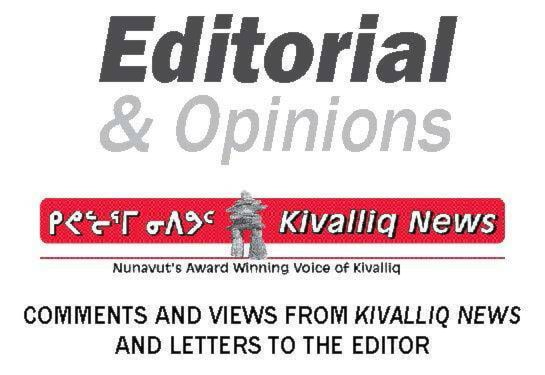The Kivalliq has some mega projects on the mind, namely the hydro-fibre link from Manitoba and a highway network connecting the majority of its communities.
Both projects got name drops in the legislative assembly last week and have some amount of higher political traction, so they’re not just pipe dreams.
But then you look at other stories this week, and Rankin Inlet can hardly open a 16-unit apartment complex because of the strain on its utilidor and water system.
A new air terminal building is on deck to get started this summer, and the hamlet needs what, $100 million to upgrade its water system to proper capacity?
Even if Mayor Harry Towtongie’s pleas to the territorial government to prioritize that project come through, upgrading the water system isn’t going to be finished overnight.
It’s an endless story of Nunavut, not just the Kivalliq, that the infrastructure needs dwarf the capacity to serve them.
Rapid population growth only fuels that fire further, and then you get the appropriate questions of why is so much money being spent on an airport, when we can hardly house our residents in the first place?
Feeling some sympathy for Government of Nunavut politicians and staff is natural: unless they can really pull a rabbit out of a hat, they’re never going to go down as heroes, because the territory will be chasing its ever-growing tail and getting more and more squeezed, no matter how much progress they make, like a game of Snake.
And the Kivalliq is only one region of a territory that has these same challenges and demands everywhere.
Despite the challenges, these mega projects are more than worth pursuing. Whatever investment they take will pay off almost immediately with the enhanced capacity of the Kivalliq. Besides the benefits of the finished products, the construction frenzy and opportunities for Nunavummiut would be huge.
The road system particularly was one of the original visions for Nunavut, ideally extending all the way down to Manitoba and truly connecting the territory to the rest of the country.
It would be more than a feather in the cap if the Kivalliq Inuit Association can successfully lobby for the hydro-fibre line to become a reality. As President Kono Tattuinee said previously, the hydro link would be nation building. It would change the Kivalliq and the territory for the better, forever.
Until then, let’s keep the heat to the GN’s feet and hope we can at least get Rankin Inlet’s water system up to standard.
